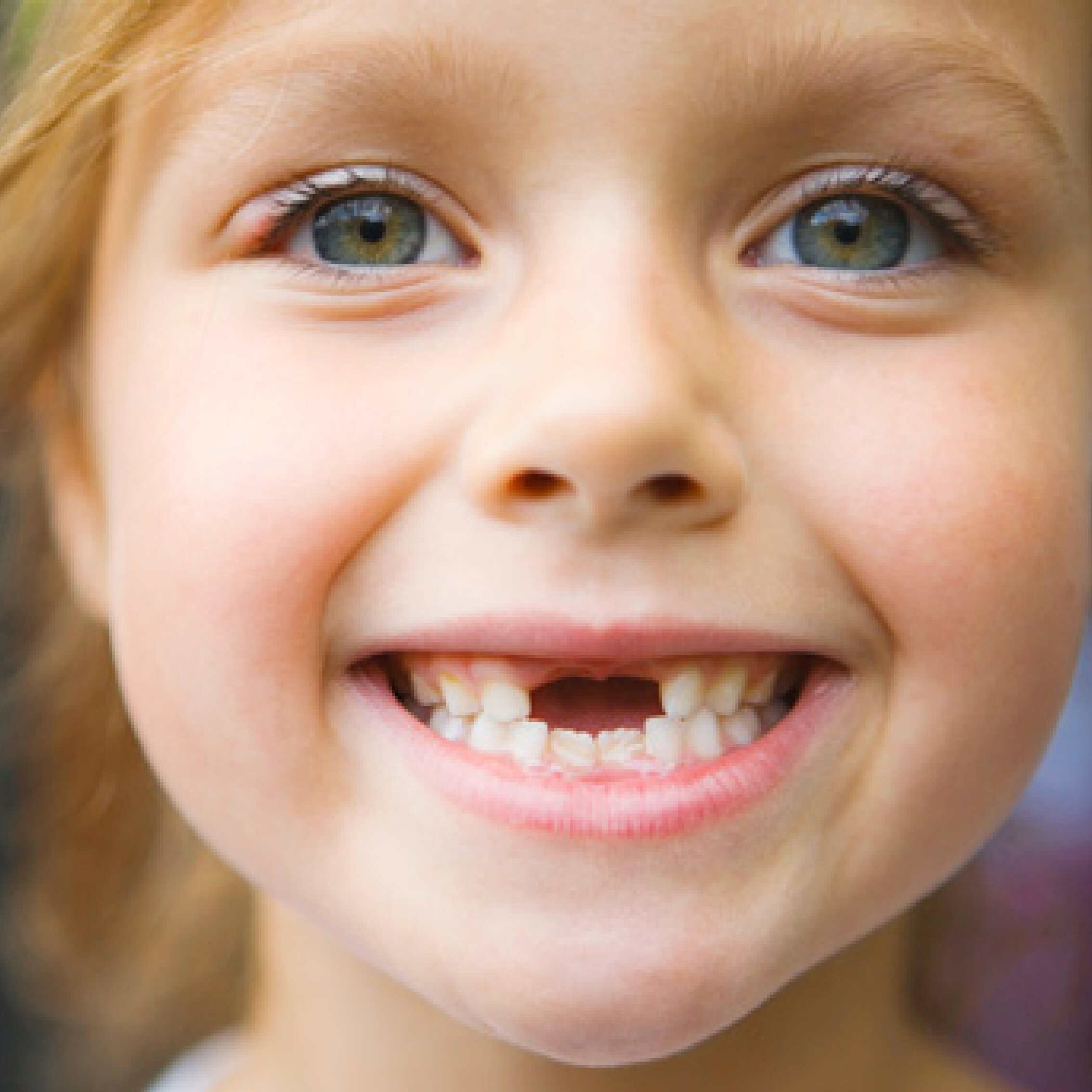Young Dentistry provides BPA-free sealants that safely and effectively protect the biting surfaces of your child’s teeth, where decay is most likely to form. Posterior teeth (the premolars and molars) have pits and fissures that are difficult to clean. Sealants provide a smooth surface so bacteria will not stay in those hard-to-reach grooves. The care of sealants is very important to ensure their efficacy. Frequently chewing gum or hard ice will risk pulling off or fracturing sealants. Additionally, nighttime grinding may also prematurely wear down sealants. We evaluate your child’s sealants at every 6 month recall visit and repair or replace those that are damaged.
Read MoreOnce your child starts playing competitive sports (such as lacrosse, field hockey, basketball, football, and others) we strongly recommend that they wear a sports mouth guard to protect their adult teeth from fracturing due to trauma. Over-the-counter sports guards are readily available; however, if you need a more comfortable alternative we are happy to help.
Read MoreFluoride… the big debate! We look at every child individually to figure out thedifferent sources from which they are getting their fluoride. Depending on your personal preference and your child’s risk of getting cavities, we will come up with a preventive plan that you are comfortable with. A little bit of fluoride goes a long way, and the safety of your child is our top priority.
Read MoreXylitol is a natural sugar alcohol that, in the right amount, may help reduce the type of bacteria in the mouth that cause cavities. We will discuss xylitol as an option for your child.
Read MoreIf your child loses a baby tooth early, through decay or injury, their other teeth could shift and begin to fill the vacant space. When your child’s permanent teeth erupt, they may be blocked out. The result is crooked or crowded teeth, difficulties with chewing or speaking, and orthodontic treatment.
To prevent space loss, which is important for proper growth and development, Dr. Marcie will insert a space maintainer to hold the space left by the lost tooth until the permanent tooth emerges. Later, as the permanent tooth emerges, the space maintainer is easily removed.
Read MoreIf you child has a non-nutritive sucking habit such as thumb, fingers, pacifier, lip or tongue sucking that is causing damage to the oral structure (i.e., abnormal shape of mouth, protruding teeth, or bite opening or shifting). If traditional counseling and positive reinforcement strategies are not successful, we can offer many types of custom-made oral appliances to help your child stop these harmful habits. We never make your child feel bad or embarrassed, but instead offer positive encouragement that leaves them feeling empowered and in control, thereby motivating them to want to stop the harmful habit.
Read MoreLet’s get back to the basics.
It’s important for kids to learn the best way to brush their teeth! Sometimes it’s hard to see where plaque and food build up, so we like to show children how they can see the before-and-after difference in a mirror by having them close closing their teeth after they brush and floss. Now that they can see these areas, we hope that between visits, they will “slow down” and take the time to brush these spots extra good.
At each visit we will also spend time reviewing your child’s dietary intake and daily dental hygiene routines, and encourage healthy eating habits and instruct on proper brushing and flossing techniques.
Read MoreWe care about the safety of dental materials and do not place mercury containing silver (amalgam) fillings. Instead we place BPA-free white (composite fillings), which are safe and aesthetic.
They look so great that no one will know your child had a cavity!
Read MoreChildren have a tendency to bite their lips and even the inside of their cheeks when they are numb from anesthesia. Children also become embarrassed being numb because they can’t speak clearly or smile or drink properly, which may make them feel uncomfortable and self-conscious. Additionally, drooling can become an issue.
We can reverse the “numb feeling” so children can go back to school without feeling funny or injuring themselves.
Read MoreSilver Diamine Fluoride (SDF) is a non-invasive treatment option for cavities, using topical medicine that is painted on the tooth instead of a more invasive surgical (drill and fill) approach.
Read MoreClean the area around the tooth. Rinse the mouth with warm salt water and use dental floss to remove any trapped food between the teeth. DO NOT place aspirin on the gums or tooth; this will cause a burn to the gum tissues. If there is swelling, apply cold to the outside of the face. Take acetaminophen or ibuprofen for pain, and schedule a dental appointment right away.
Read MoreSome children will get these periodically. Placing vitamin E oil over the area, switching toothpastes, and/or incorporating kefir (a fermented food or drink product that contains probiotics) into your child’s diet can provide relief. If the sores persist or are extreme, see the dentist.
Read MoreFold a gauze pad or clean washcloth over the bleeding area. Keep it in place for 15 minutes, then repeat as necessary.
Read MoreTry to remove the object with dental floss. If you cannot remove it, please come into the office.
Read MoreDo not move the jaw. Stabilize the jaw by tying a towel, necktie, etc., over the top of the head. Apply cold compresses. Go to an oral surgeon or hospital emergency room immediately.
Read MoreIf there is bleeding apply gentle pressure with a clean cloth or gauze. Apply an ice compress to the injured area. If bleeding does not stop, go to a hospital emergency room.
Read MoreIf your child’s permanent or primary tooth becomes loose as a result of trauma first check to see if there is any bleeding. Stop the bleeding by applying pressure using a gauze pad or clean washcloth. Dental trauma resulting in loose teeth requires immediate attention by the dentist. Call your child’s dentist for an emergency appointment.
Read MoreFind the tooth. Handle the tooth by the crown (NOT by the root). If the tooth is dirty, gently rinse it in cold water, but DO NOT scrub or handle the root unnecessarily. Try to place the tooth back into the socket. Have the child hold the tooth in place by biting down on a gauze pad or washcloth. If it is not possible to replace the tooth, place the tooth in a cup of milk, or if milk is not available, cool water. Go to the dentist immediately. Time is of the utmost importance for saving the tooth; less than 30 minutes is ideal.
Read MoreBaby teeth should not be re-implanted, or damage to the permanent tooth follicle could occur. Control any bleeding by applying pressure with a gauze pad or clean wash cloth. Call your child’s dentist and schedule an exam as soon as possible. It is important to evaluate the health of the surrounding teeth and gums.
Read MoreGently clean or rinse dirt from the area around the break. Place a cold compress on the face in the area of the broken took to minimize lip or facial swelling. If the fracture is more than one-half of the tooth, see the dentist immediately.
Read More



















